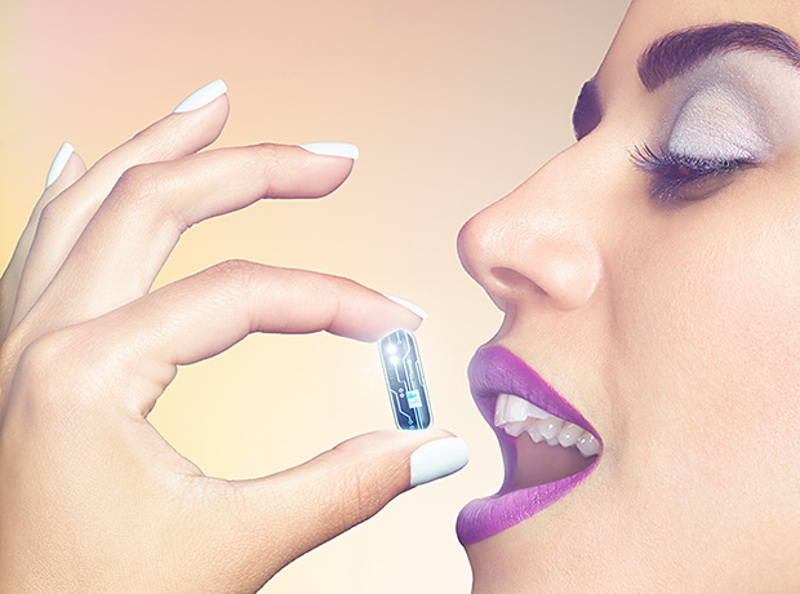 NEWS
NEWS
 NEWS
NEWS
 NEWS
NEWS
There are enormous opportunities for the expansion of the industrial internet in the healthcare industry. Executives and various companies are realizing this and are embracing it fully. They realize that the industrial internet will allow medical professionals to make more informed decisions, thus having a positive impact on patients. The potential of the industrial internet to also cut costs for the healthcare industry is an obvious driving force. The expected growth potential was depicted in a recent report by MarketResearch.com, which stated that big data and the healthcare Internet of Things will expand at a 15.1 percent compound annual growth rate to hit $117 billion by 2020.
This market snapshot provides three products that are changing how doctors monitor patients and how patients monitor themselves.
Proteus Discover is changing the way doctors and patients gain information to deal with complex and chronic conditions. Using a sensor-embedded pill and a patch placed on your body, Proteus Discover hope to provide better insights for the patient as well as the healthcare professionals involved. Thus enabling them to provide specific treatment that suits the patient.
How the technology works
Together with the regular medication prescribed, the healthcare professional will also prescribe sensor-enabled pills. These pills contain an ingestible sensor the size of a grain of rice. Once the sensor-enabled pill reaches your stomach, it sends a signal to the Patch that the patient is wearing on their body. The sensor-containing Patch will monitor when the patient swallows each sensor-enabled pill, as well as the rest and activity patterns of the patient. The Patch will record all the information and relay it to both the patient and the healthcare professional. Patients can then use the Discover app to keep track of the medication, and set up medication reminders. Patients can also monitor their activity levels including steps they have taken, rest levels, heart rate, blood pressure and weight. Healthcare professionals can use the Discover portal to monitor the patient and provide the best treatment plan for the patient.
Getting patients to stick to their prescribed medication regimen can be a huge problem for healthcare professionals. This can have negative complications for the patient, including increased healthcare costs, complications, and even death. AdhereTech have come up with a solution to this problem in the form of a sensor wireless pill bottle.
How the technology works
AdhereTech’s pill bottles are the same size and feel of a regular bill bottle and can be used straight out of the box, requiring no setup. Using sensors, the pill bottle can detect when a patient removes one pill or one liquid millimeter of medication. If no medication is taken, the service will remind the patient via an automated text message or phone call. There are also on-bottle lights and chimes that can alert the patient that they have missed their medication. The bottle constantly collects and send real-time data to the system, which is analyzed and populated on AdhereTech’s secure dashboard. The smart pill bottles are currently being used in pilot programs with pharmaceutical companies, pharmacies, and hospitals.
By 2035, over 592 million people will have diabetes, according to a report published by the International Diabetes Federation. Researchers are therefore constantly looking for new ways for patients to monitor their glucose levels and avoid taking a blood sample. Google X could have a solution. They have been working on a smart contact lens that will be able to monitor a diabetic’s blood glucose level. The news appeared mid last year of plans to commercialize the smart contact lens within five years. However, with the recent patent application for the contact lens packaging being filed on July 25, perhaps the deadline could be moving up.
How the technology works
Equipped with an antenna and flexible sensors, the smart contact lens will be able to determine a diabetic’s glucose level by interacting with their tear fluid. Readings can then be sent directly to the diabetic’s smartphone.
The industrial internet will revolutionize emergency medical systems allowing improved patient care on site and during transit. EMT’s will be able to gather a patient’s medical history from cloud medical records. Doctors at the hospital will be able to monitor the patient and advise the EMT about treatment while they also prepare for the patient’s arrival at the hospital.
Other future developments include electrical brain monitors to assist in the rehabilitation of patients who have suffered traumatic injuries. As well as electrical simulators to accelerate bone growth.
Support our mission to keep content open and free by engaging with theCUBE community. Join theCUBE’s Alumni Trust Network, where technology leaders connect, share intelligence and create opportunities.
Founded by tech visionaries John Furrier and Dave Vellante, SiliconANGLE Media has built a dynamic ecosystem of industry-leading digital media brands that reach 15+ million elite tech professionals. Our new proprietary theCUBE AI Video Cloud is breaking ground in audience interaction, leveraging theCUBEai.com neural network to help technology companies make data-driven decisions and stay at the forefront of industry conversations.